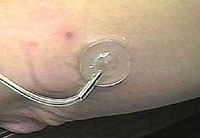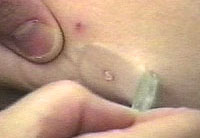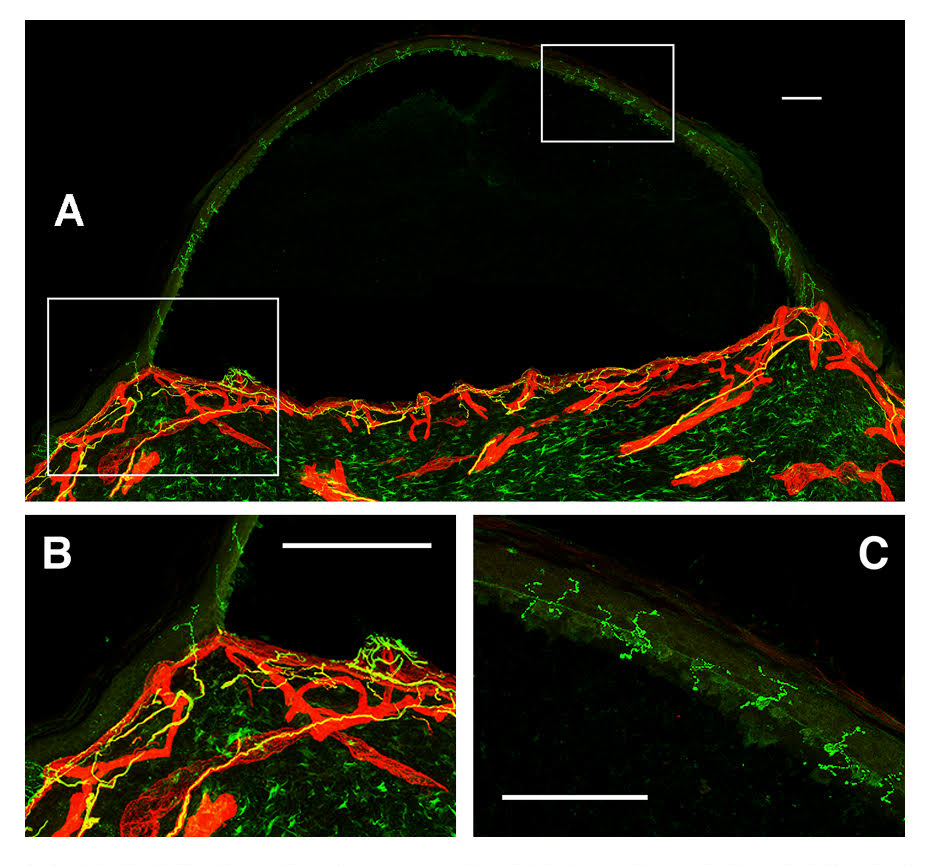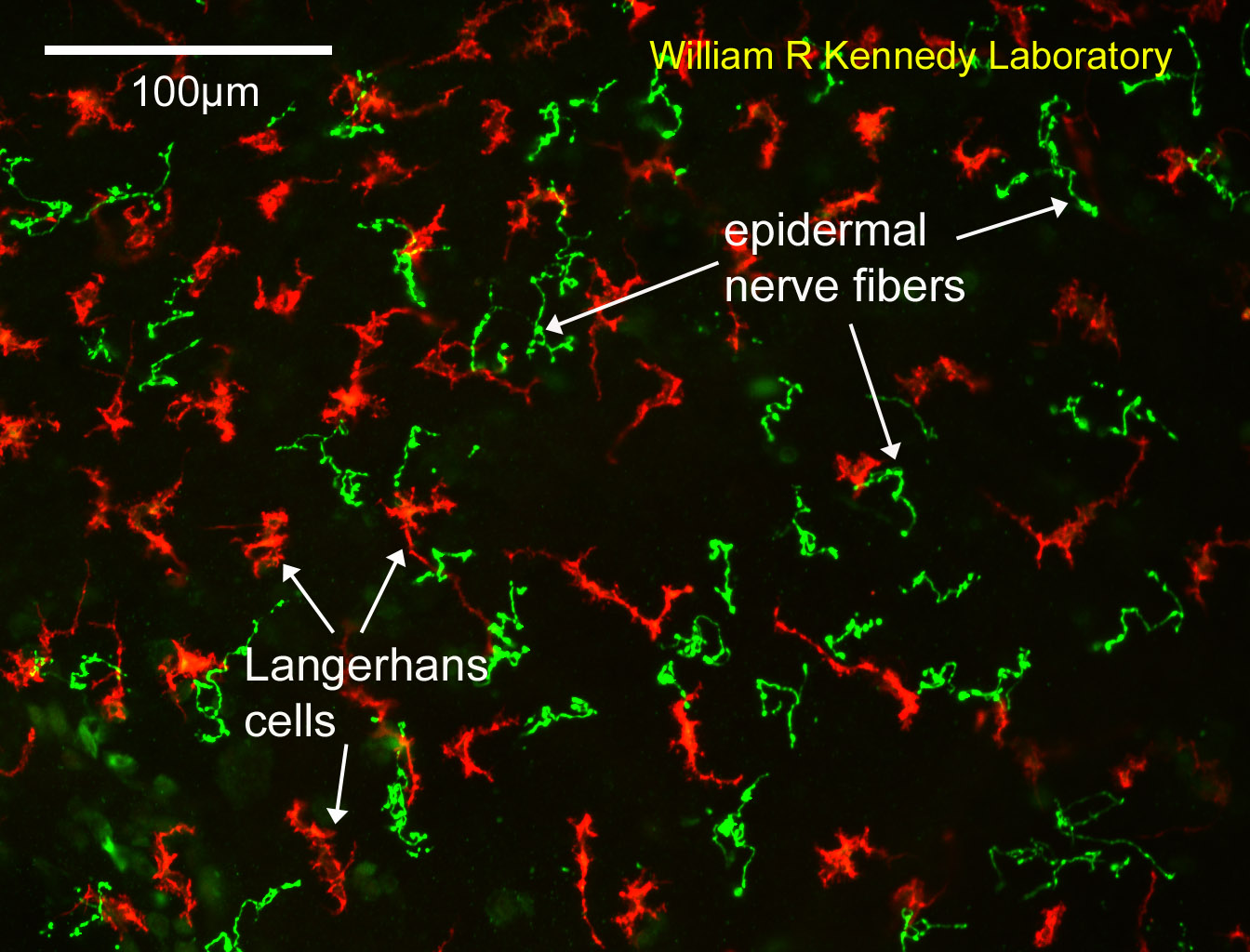A Skin Blister Method for Quantification of Epidermal Nerves
We believe the blister method will be useful for diagnosing neuropathy and as a model for studying skin injury. There are several advantages of the skin blister over the standard skin biopsy:
- Non-invasive - only the epidermis is removed. Since the nerves have pulled free from their proximal connections, no pain is felt during formation or removal.
- Epidermis specificity - whereas the standard skin biopsy includes both epidermis and dermis, the blister is a pure sample of epidermis taken above the basement membrane. Capillaries remain intact. The full length and all branches of the ENFs are included.
- Sample Size - The sampled area is much larger than the epidermal surface represented in a thick section from a skin biopsy.
Creation of a Suction Blister
|
A suction capsule is attached |
After about an hour, the capsule is removed |
|
The roof of the blister is removed. It doesn't hurt - the nerves in the roof of the blister have pulled loose from their proximal connections. |
The blister is flattened under a coverslip and immunostained. |
Sensory Test Correlation
We are currently studying the correlation between number of nerves in a blister and the results of these sensory tests.
- Touch
- Pin Prick
- Hot/Cold Latency
- CaseIV
Blister in Cross Section
Confocal image of an immunostained sectioned blister. (A) Nerves (protein gene product 9.5 immunoreactivity) are green or yellow, basement membrane (type IV collagen immunoreactivity) is red. Epidermis is separated from dermis just above the dermal-epidermal basement membrane. Scale bar equals 200µm. (B) Dermal capillaries and the subepidermal neural plexus remained intact. Scale bar equals 100 µm. (C) Epidermal nerves, severed from their proximal segment, remained in the blister roof. Scale bar equals 50 µm.
Illustration from Kennedy WR, Wendelschafer-Crabb G, Johnson T, Nolano M. A skin blister method to study epidermal nerves in peripheral nerve disease. Muscle Nerve 1999;22:360-371. PMID: 10086897.
The excised, whole mounted blister roof is immunostained for protein gene product 9.5 (to show nerve fibers) and CD1a (to show Langerhans cells). The blister roof image is then analyzed en face to count the number and determine the distribution of ENFs.






